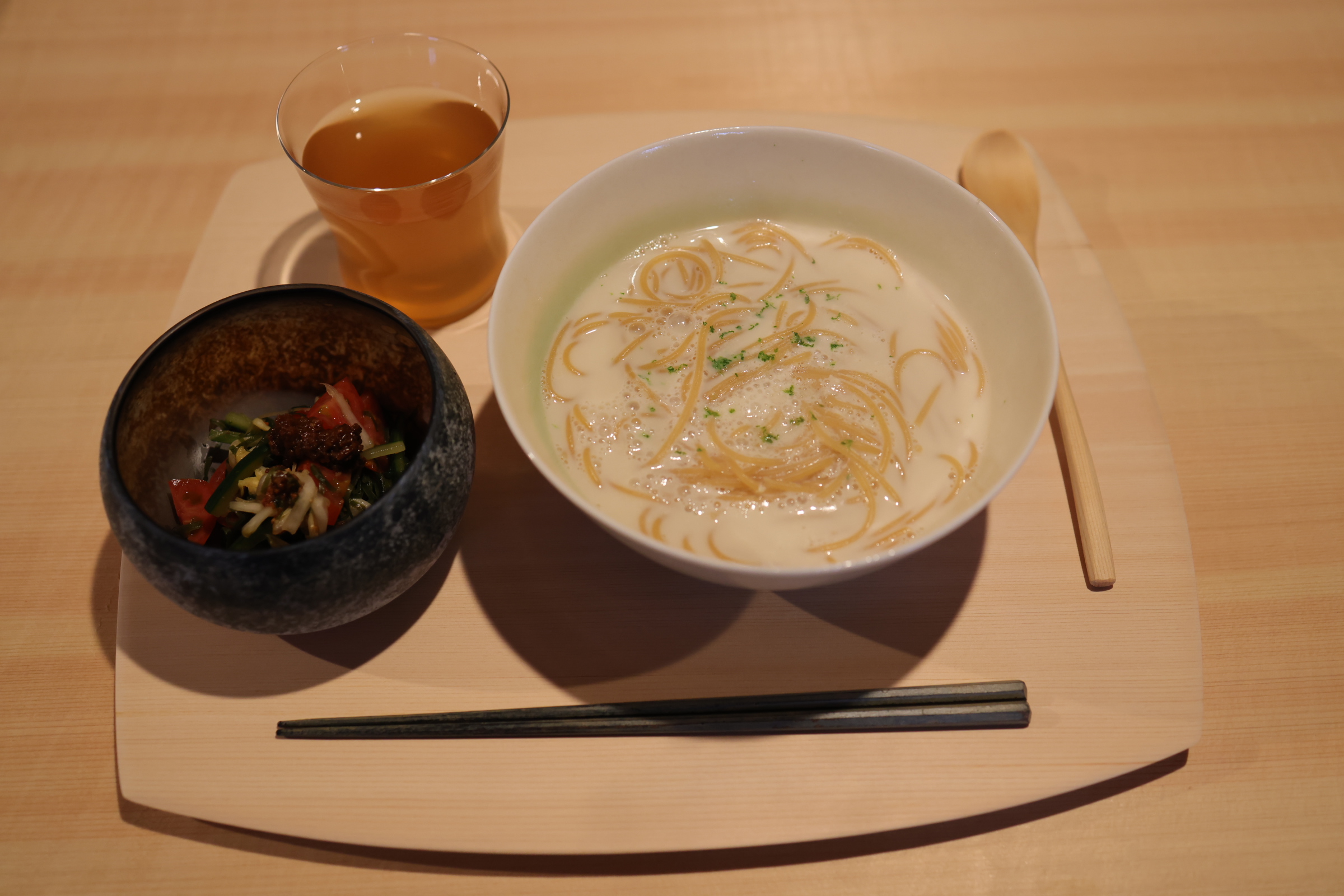
Food Event “Soybeans and Seaweeds”
A series of workshops to consider the future of dining in Japan, given the progress of climate change, global warming, and the declining birthrate and aging population.
On October 10, 2022, we organized an event titled ‘Beans and Seaweeds’ to explore the future potential of soybeans and seaweeds. These ingredients are rich in protein and offer possibilities for effective use of fallow land, and are used in Japanese seasonings such as miso and soy sauce, as well as in fermented foods like natto and as ingredients in tofu.
Ken Sakamoto, owner and chef of Italian restaurant “cenci”, proposed a meal with the hope that it will be served at local tables from now on. Using soybeans, which are likely to become a staple food in the future, and seaweed from the sea of Taiza , Sakamoto offered warm noodle dishes arranged from the Korean dish Kong-guksu (soybean milk noodle) and a Kyotango version of the Taiwanese dessert douhua (soybean pudding).
The dishes included new pieces by Akio Niisato for the opening of his earthenware kiln and bowls glazed with clay from Taiza region. We were serving a combination of bowls and spoons and trays by Shuji Nakagawa.
DATE
October 10, 2022
VENUE
TAIZA Studio
FEE
2,500 yen
Capacity
16 people

Kong-guksu (soybean milk noodle)
“Soy beans” are used in various fermented foods and seasonings in Japan, and we propose a dish that considers the possibilities of soybeans that will continue to be eaten as part of the food culture in the future. For the broth, out-of-spec shrimp is procured from Maizuru port and combined with minced chicken and soy milk. The noodles are made from 100% yellow peas and are gluten-free.
The noodle bowl is a white porcelain bowl made by Akio Niisato using local clay for glaze.

Seaweed Water Kimchi
It has been proven that growing seaweed makes the sea richer and brings back fish. Sakamoto told us that there are still many unknown seaweeds in the sea, and that only about 0.1% of all seaweed is eaten. As the number of fish is decreasing, if fish come back by growing seaweed without having to farm fish, the natural power of nature will restore the resource. We will continue to eat seaweed in the future, and if we can find and grow tasty foods from it, the ocean will become richer and we can experiment with more different ways of cooking it. This time, cenci and @@@ Kusunoki, a fermenter, collaborated to change the flavor of Kong-guksu by adding soybean paste, a combination of fermented onion koji, on top of fermented vegetables and seaweeds in the method of making water kimchi.
The small bowls and glasses were made by Satoshi Sato of PONTE.

Douhua (soybean pudding)
Dessert is a Taiwanese dessert called douhua. Soy milk is hardened with agar, and cacao tea, made by boiling the outer husk of cacao in water, raw sugar, millet sugar, and lotus flour, is kneaded on top and served with cacao rice cakes.
The bowls were fired for the first time by Akio Niisato and Takaya Kato in a kiln they built from scratch on a vacant lot in Miya, Tango Town. The bowls are made of local clay and are a mixture of orange and gray from the rice husks.
<Event Scene>




